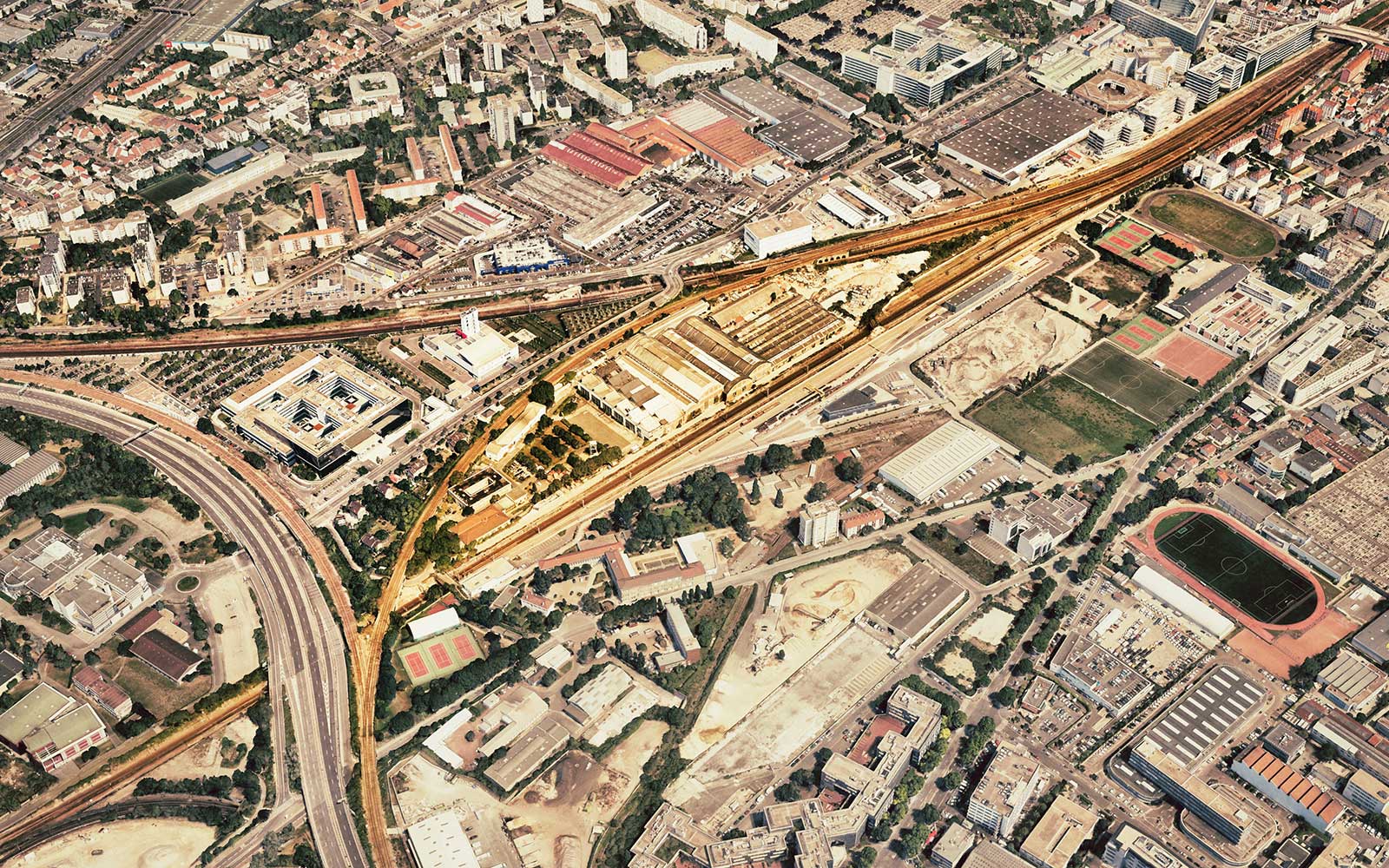
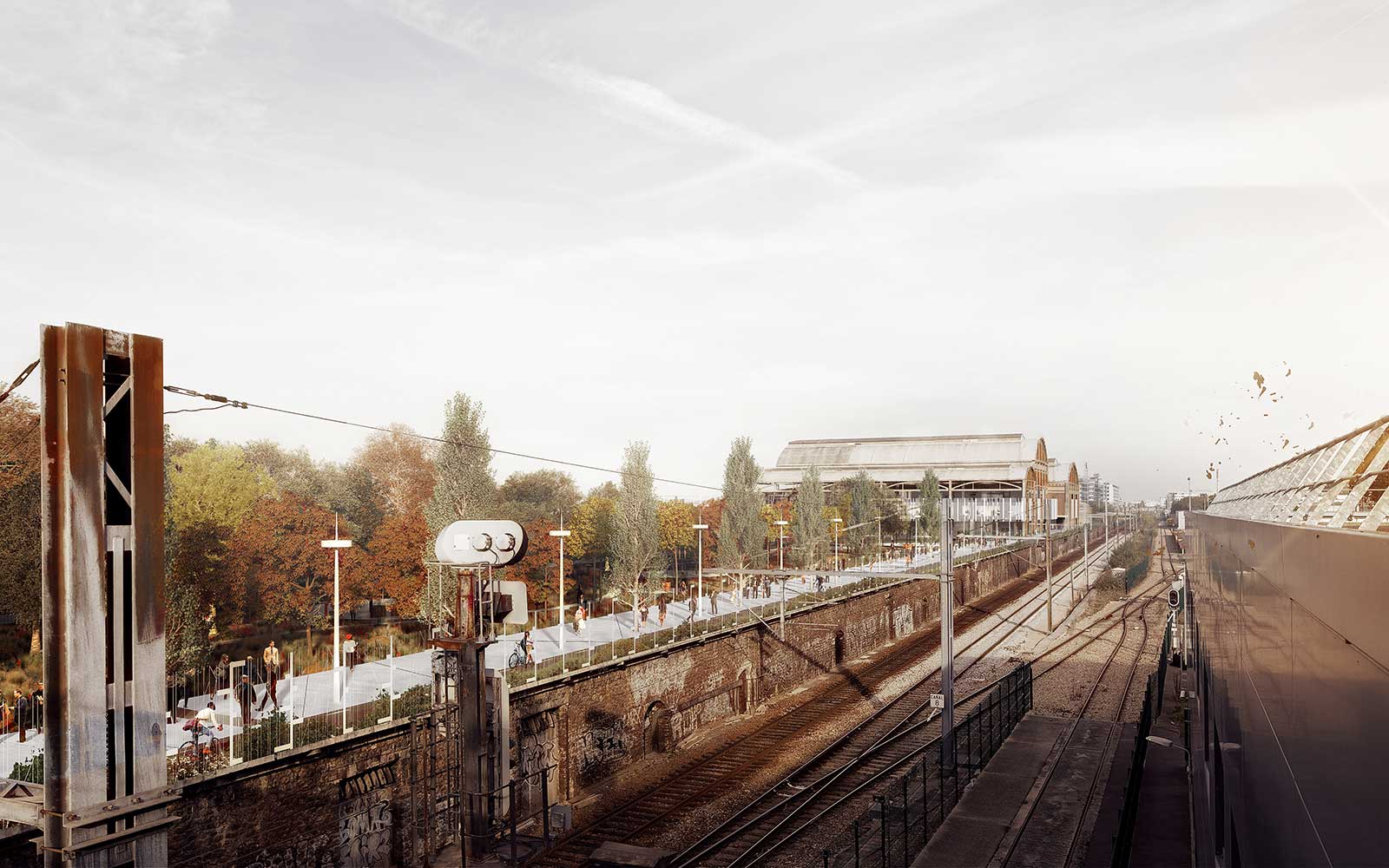
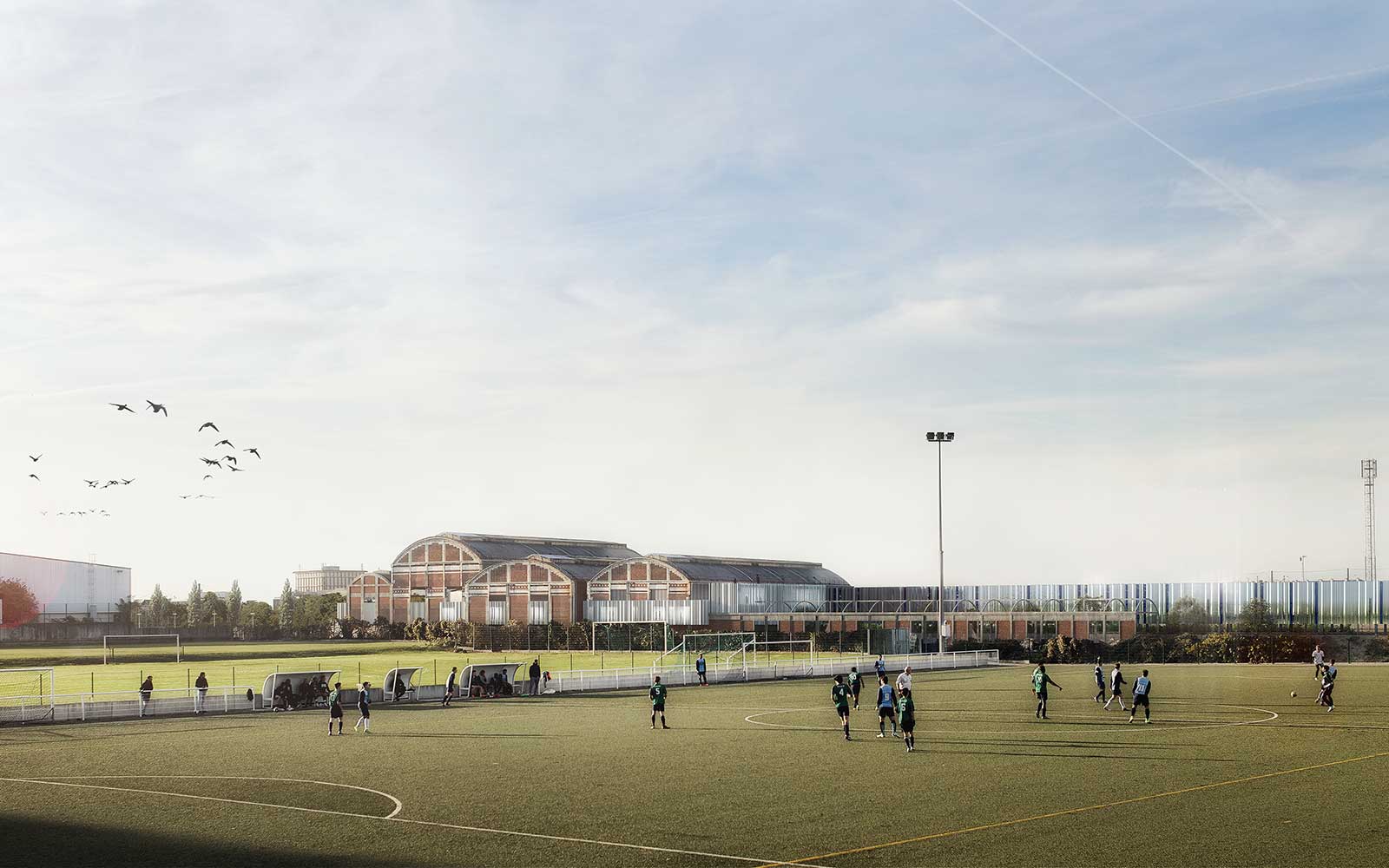
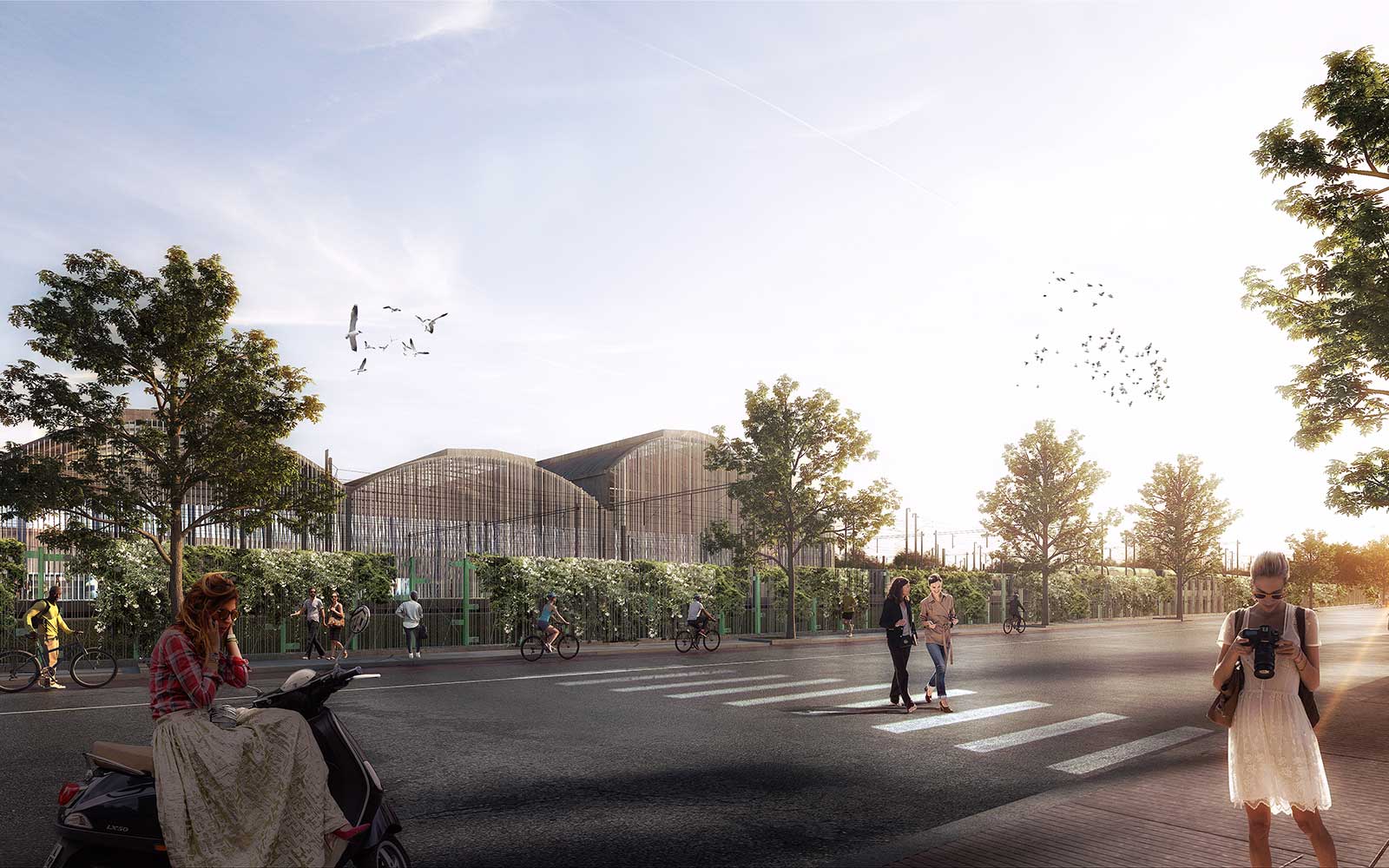
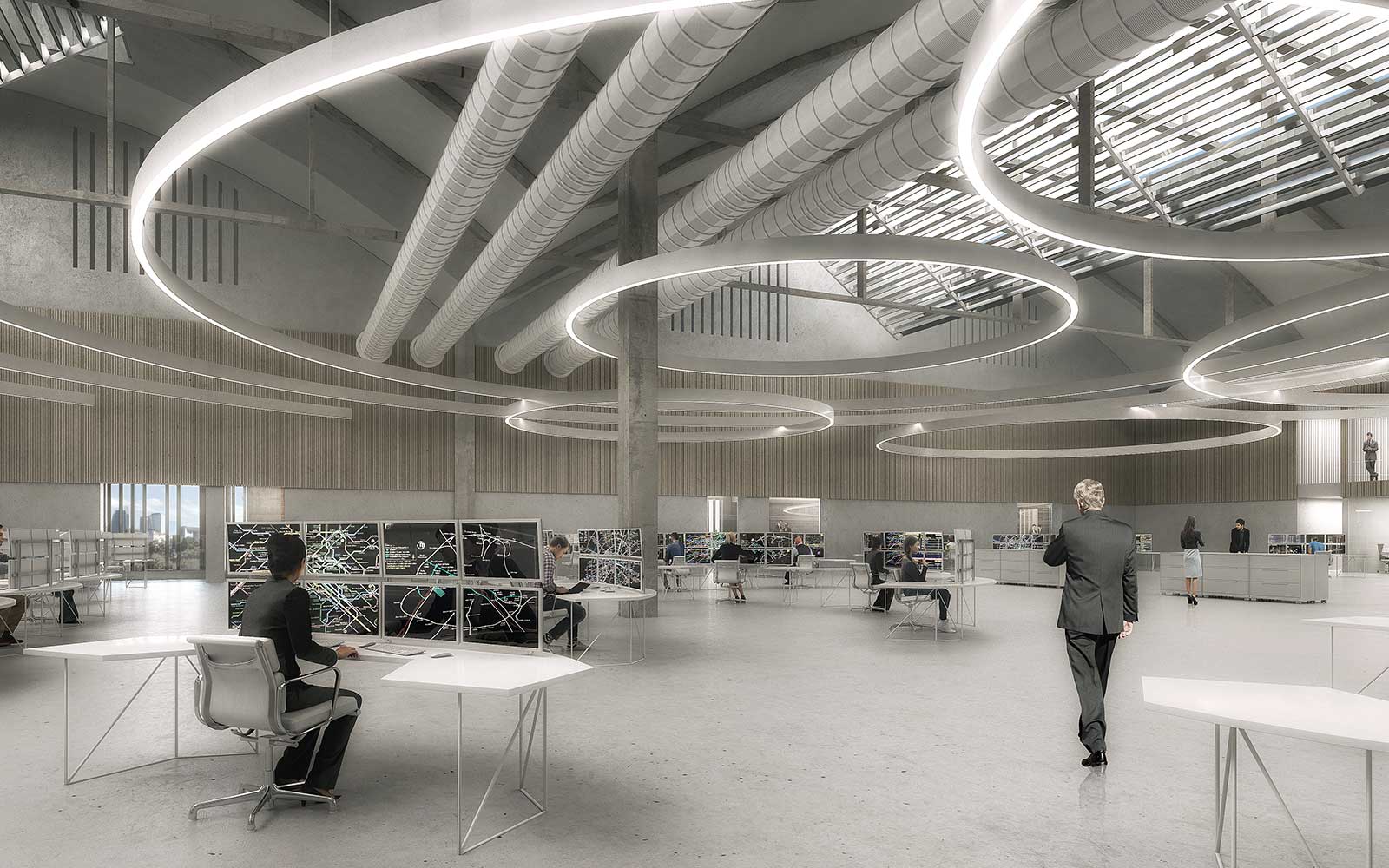
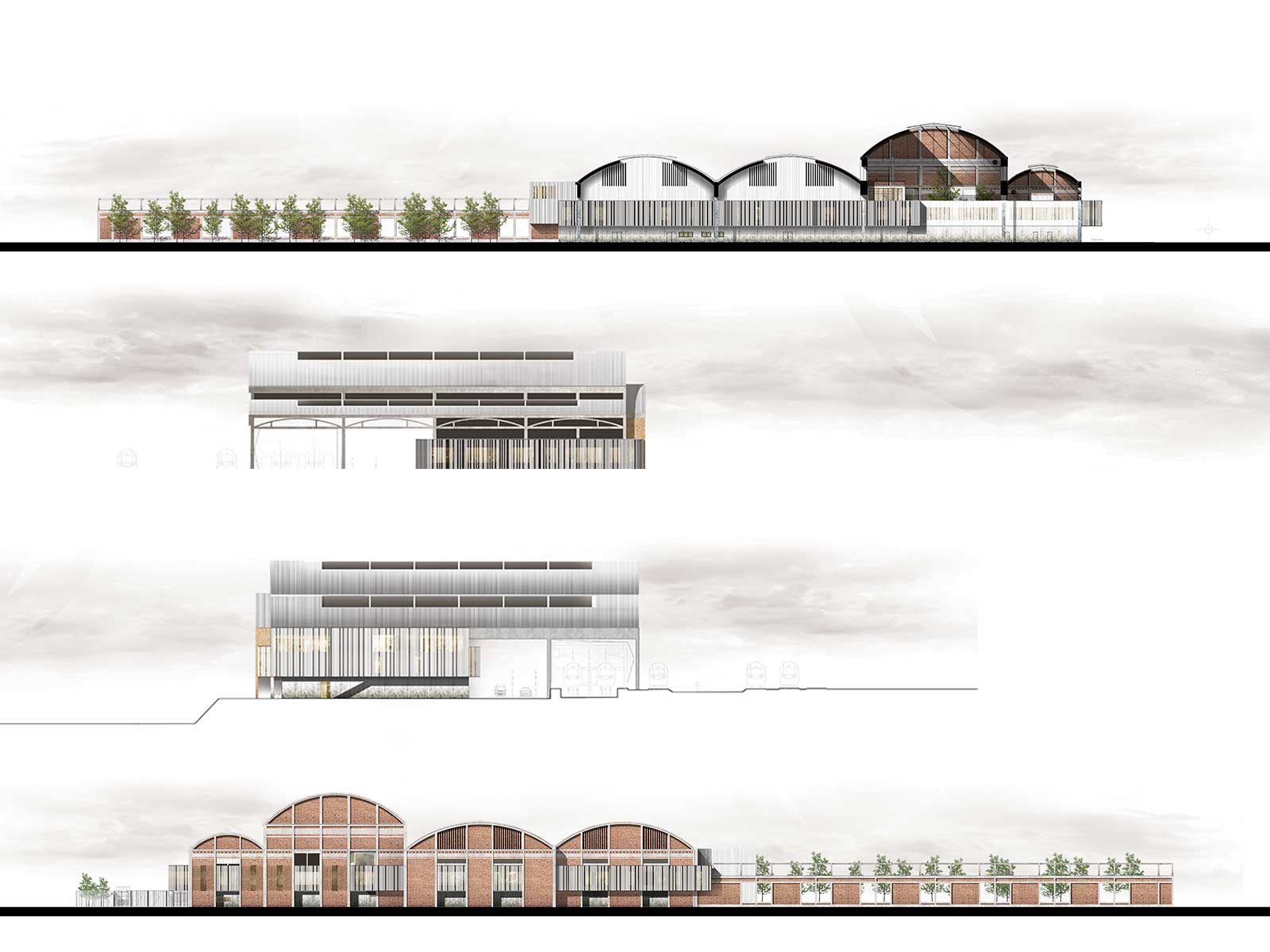
RER Central control center
Nanterre, France
project 2017
program: Construction of a building hosting a central control center for the regional train (RER E), a centralised control center for the network and a central control center for the substation of Paris-Saint-Lazare ; redevelopment of a rail market building
> total area: 5 499 m2
> external areas: 2 540 m2
client: SNCF Réseau Plateau Eole
project: Alfonso Femia * with A Concept
landscape: Atelier Volga
structural engineering: Quadriplus Groupe
services and environmental engineering: Franck Boutté Consultants
acoustic engineering: Peutz et Associés
economy control office: Bureau Michel Forgue
images: ©Atelier(s) Alfonso Femia & CC79
Nanterre, France
project 2017
program: Construction of a building hosting a central control center for the regional train (RER E), a centralised control center for the network and a central control center for the substation of Paris-Saint-Lazare ; redevelopment of a rail market building
> total area: 5 499 m2
> external areas: 2 540 m2
client: SNCF Réseau Plateau Eole
project: Alfonso Femia * with A Concept
landscape: Atelier Volga
structural engineering: Quadriplus Groupe
services and environmental engineering: Franck Boutté Consultants
acoustic engineering: Peutz et Associés
economy control office: Bureau Michel Forgue
images: ©Atelier(s) Alfonso Femia & CC79
“Every major city has buildings which can be described as “heroic” and are characterised by their longevity defined by their physical dimensions, their visibility in the urban space.” AF
Every major city has buildings which can be described as “heroic” and are characterised by their longevity defined by their physical dimensions, their visibility in the urban space.
From the Groues area to the Montesson plains, via the station square, the rail Island can be discovered, appearing from the rail belt and the line drawn by the succession of trees along the pedestrian way.
Our way starts at the west point of the plot. We can choose between two discoveries: the first is sudden and lets a direct access to the protection of the offices volume, the second is progressive, winds around the landscape along small sport equipments and lets the discovery of the entrance little by little.
It is the appearance of the building: the starting point is the realities of the existing, its relation with the context and its own characteristics – then, a new contemporeanity was born.
With a variation and a modernisation of the natural existing materials the first floor is revealed thanks to its casing rhythmed by some white concrete strips. As an emerging volume, it overhangs and protects the glazed airlock of the entrance hall. The way is pursued through the space freed by the two facades interval, through the new forged concrete and old bricks conserved and protected by the volume of the first floor which returns along the existing facade.
Always divided, this new volume punctually generates new shapes outside the limits of the market buildings, by respecting and glorifying their scheduling with a game of appareance and disappearance. By leaning on, touching, getting round, erasing, it creates the visual identity of the project.
Inside, the way is pursued in three times.
First, the entrance, briefly narrowed, lets the control and the visibility necessary to the program. Then an enlargement and an opening towards the patio: the zenithal light makes our head raise and look at the existing glass roof. It is the rise towards the offices, a breathing lets the contemplation of the existing structure and the lung of the building. The floors leading to the offices. Each of them opens on the outside facades, enjoying a natural light at the maximum.
Finally, this is the arrival at the heart of the building, the exploitation room. Under the width of two market buildings, a new interiority is created, magic and desirable.
The volume of the vaults becomes perceptible but its light provision is controlled thanks to a light structure that lets manage the arrival of the light beams.
On the bottom, some light circles go back to the repositioning of the group of the operations panels.
Finally, it is the start of the vegetalized car-park which develops at the back of the facade, along the conserved facades of the winding workshops (south).
Facing it, the structure sheltering the rails along the pit deploys, a canopy mixing trapezoidal sheet metal and glass strips.
When getting away, the choice of horizontality becomes obvious: each program is clearly developed on a horizontal space that can benefit from double and simple heights, each function finds its expression on the facade while integrating in the patrimonial value of the existing facades.
A new architectural object was born, the nerve center of a flows management at a large or small scale: a compact securised volume that exploits the best the spatiality offered by the conserved market buildings.
From the Groues area to the Montesson plains, via the station square, the rail Island can be discovered, appearing from the rail belt and the line drawn by the succession of trees along the pedestrian way.
Our way starts at the west point of the plot. We can choose between two discoveries: the first is sudden and lets a direct access to the protection of the offices volume, the second is progressive, winds around the landscape along small sport equipments and lets the discovery of the entrance little by little.
It is the appearance of the building: the starting point is the realities of the existing, its relation with the context and its own characteristics – then, a new contemporeanity was born.
With a variation and a modernisation of the natural existing materials the first floor is revealed thanks to its casing rhythmed by some white concrete strips. As an emerging volume, it overhangs and protects the glazed airlock of the entrance hall. The way is pursued through the space freed by the two facades interval, through the new forged concrete and old bricks conserved and protected by the volume of the first floor which returns along the existing facade.
Always divided, this new volume punctually generates new shapes outside the limits of the market buildings, by respecting and glorifying their scheduling with a game of appareance and disappearance. By leaning on, touching, getting round, erasing, it creates the visual identity of the project.
Inside, the way is pursued in three times.
First, the entrance, briefly narrowed, lets the control and the visibility necessary to the program. Then an enlargement and an opening towards the patio: the zenithal light makes our head raise and look at the existing glass roof. It is the rise towards the offices, a breathing lets the contemplation of the existing structure and the lung of the building. The floors leading to the offices. Each of them opens on the outside facades, enjoying a natural light at the maximum.
Finally, this is the arrival at the heart of the building, the exploitation room. Under the width of two market buildings, a new interiority is created, magic and desirable.
The volume of the vaults becomes perceptible but its light provision is controlled thanks to a light structure that lets manage the arrival of the light beams.
On the bottom, some light circles go back to the repositioning of the group of the operations panels.
Finally, it is the start of the vegetalized car-park which develops at the back of the facade, along the conserved facades of the winding workshops (south).
Facing it, the structure sheltering the rails along the pit deploys, a canopy mixing trapezoidal sheet metal and glass strips.
When getting away, the choice of horizontality becomes obvious: each program is clearly developed on a horizontal space that can benefit from double and simple heights, each function finds its expression on the facade while integrating in the patrimonial value of the existing facades.
A new architectural object was born, the nerve center of a flows management at a large or small scale: a compact securised volume that exploits the best the spatiality offered by the conserved market buildings.



